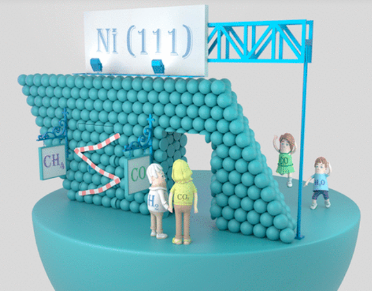Multiscale study of the mechanism of catalytic CO2 hydrogenation: role of the Ni(111) facets.
P. Lozano-Reis, H. Prats, P. Gamallo, F. Illas, R. Sayós.
ACS Catal., 10 (2020) 8077-8089.

The molecular mechanism of CO2 hydrogenation on a Ni(111) surface has been investigated by means of periodic density functional theory calculations, including dispersion interactions, along with accurate kinetic Monte Carlo simulations, including lateral interactions between the adsorbates. The present reaction model involves 25 different species and a total of 86 elementary processes, including adsorptions, desorptions, surface chemical steps, and diffusions. The reaction network accounts for three different mechanisms for the reverse water-gas shift reaction and three different mechanisms for methanation. The kinetic Monte Carlo simulations reveal that the reverse water-gas shift reaction dominates the CO2 hydrogenation on Ni(111) with no evidence of methane formation. The reaction proceeds mainly through the redox route, with the carboxyl pathway also being active but to a lesser extent.
